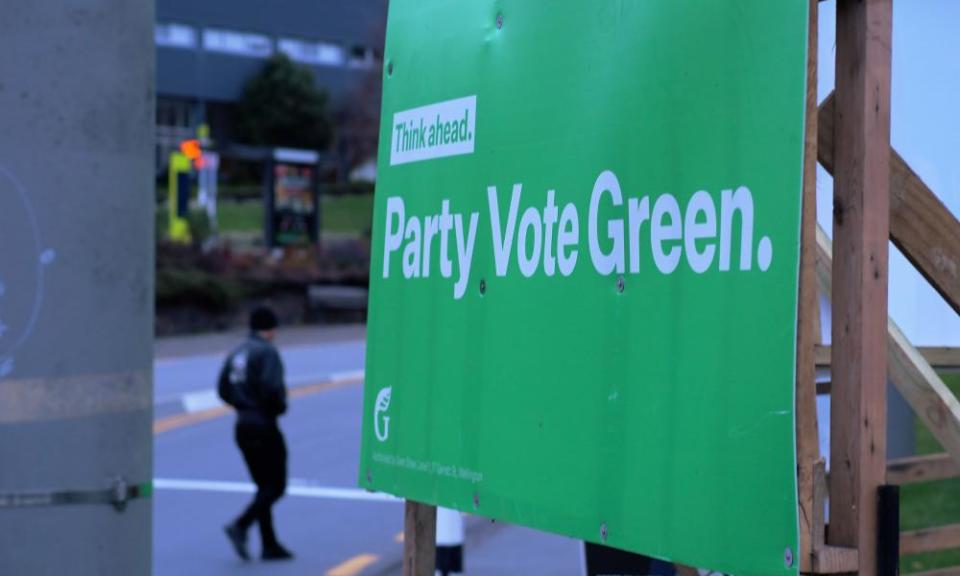Jacinda Ardern's popularity with young voters could spell trouble for the Green party

The Green party is sitting on or just above the 5% party vote threshold required to return the party to parliament in the 2020 election, according to the recent Newshub-Reid-Research and 1 News Colmar Brunton polls. While the Greens will be relieved they are currently on the positive side of the threshold, they will be not taking any comfort in these numbers.
This is because in four out of the last six elections (2002, 2005, 2014, 2017) the Greens’ vote has declined over the course of the campaign, from their pre-campaign opinion poll highs to a lower amount of support on polling day. The percentage drop in support has ranged from minus 11.66% in 2005 to minus 24.09% in 2017. In none of those four elections did the Greens’ final party vote fall to below the 5% threshold. But in none of those four elections did the Greens start the campaign from as low a position as in 2020.
Even if the best-case scenario was applied in 2020, an 11.66% drop from 5.7% would leave the Greens with a party vote between 5.036% and 4.417%; while a 24% drop would leave them with a party vote between 4.332% to 3.8% and needing a win in an electorate seat to guarantee a return back into parliament.
Related: Why being in power makes 2020 election much harder for New Zealand First | Claire Robinson
The Greens will be naturally hoping for the opposite effect; for a rise like the one they experienced in 2008. Then the party rose from 5% to 6.72% over the duration of the election campaign – a 34.4% increase. Or like 2011, when it rose from 9.4% to 11.06% (a 17.66% increase) over the same period. But in looking at those two particular elections, it pays to remember the context of the time and that Labour and the Greens share many voters on the left.
In 2008, Labour had been in government for nine years, its popularity was on the decline, and the Greens happily scooped up votes from disaffected Labour voters. After the subsequent change of government, Labour was in disarray entering the 2011 election and not looking competitive against a very popular National party. Once again, the Greens picked up the votes of many disaffected left-leaning voters who were not yet ready to return their vote to Labour.
We are confronting neither of those scenarios in 2020. Labour’s support is on the rise and showing no signs of peaking, and it is National that is not looking competitive this time. Moreover, Labour leader Jacinda Ardern’s popularity among young voters means the Greens cannot rely on the guaranteed votes of a demographic that has supported them in the past.
There are, however, two strategic voting scenarios that could work in the Green party’s favour in 2020. Both depend on the vote choices of late-deciding voters, those who make their voting decision during, rather than before, the election campaign.
Firstly, the Greens could capitalise on National’s poor polling and attract some disaffected previous Blue/Green National voters who have read the opinion polls, know their party isn’t likely to win in 2020 and want to give their vote instead to a party that will benefit more from their vote.
The problem with this scenario is that those voters will also suspect that a vote for the Greens is a vote for the inevitable return of a Labour-led government, which National leaning voters may not be keen to support.
In the past, the Greens have rejected the prospect of going into coalition with the National party, a position reinforced by Green co-leader James Shaw in 2019 when he stated that the party would never form a coalition with National while Simon Bridges led the party. Since then Shaw has resiled from that uncompromising position, saying in May 2020 that Green party membership, not the party leadership, would decide who the party joined forces with after the election after seeing which major party had the better package on the table.
Now that Bridges is no long leader of the National party, will this be enough of an olive branch to persuade Blue/Green voters to shift parties in 2020? At this stage all the evidence is pointing to the right leaning ACT party, not the Greens, benefitting from voters jumping off the National bandwagon six weeks out from the election.
The second scenario is that Labour’s currently very high levels of public opinion leave some late-deciding left-leaning voters believing that Labour’s 2020 victory is so assured that their vote is not pivotal to Labour’s success. This leaves them free to switch their vote to the apparently at-risk Greens to ensure they cross the threshold and return to parliament.
While this will be a strategy the Greens will be keen to promote, Labour will be actively campaigning to avoid it, through strong messages communicating that the only way to ensure the return of a Labour government is for voters to give their party vote to Labour.
2020 is a make or break election for the Green party. On current polling both it and New Zealand First could find themselves out of parliament on September 20, leaving only three parties: Labour, National and ACT. If this happens it will be the least number of parties in parliament since New Zealand changed its electoral system to a mixed member proportional system in 1996. If this happens, expect loud calls for further reform of the electoral system.
• Claire Robinson is a professor of communication design and pro vice-chancellor at the College of Creative Arts at Massey University in Wellington, New Zealand. She is the author of Promises Promises: 80 Years of Wooing New Zealand Voters (Massey University Press)

